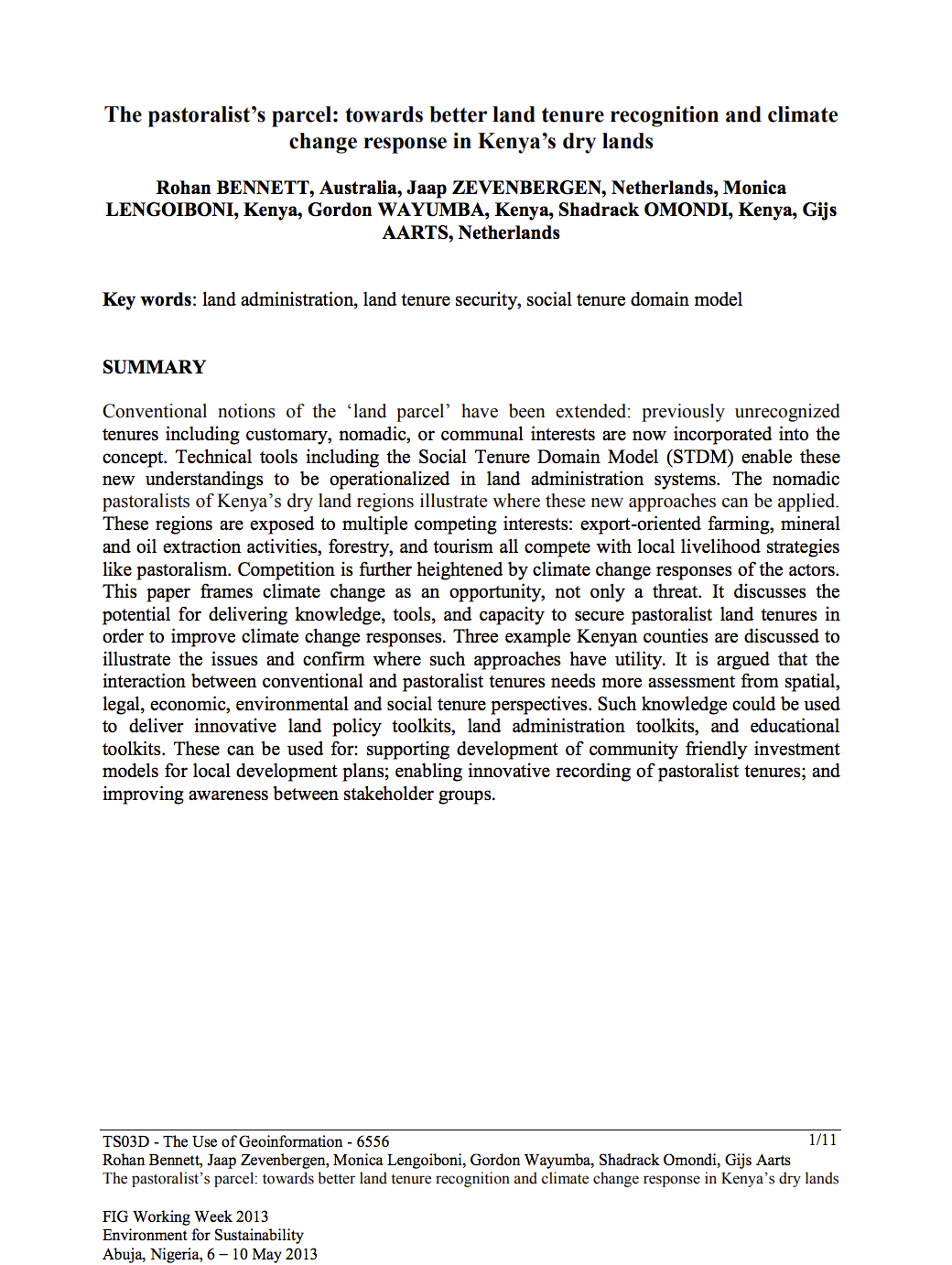Resource information
Conventional notions of the ‘land parcel’ have been extended: previously unrecognized tenures including customary, nomadic, or communal interests are now incorporated into the concept. Technical tools including the Social Tenure Domain Model (STDM) enable these new understandings to be operationalized in land administration systems. The nomadic pastoralists of Kenya’s dry land regions illustrate where these new approaches can be applied. These regions are exposed to multiple competing interests: export-oriented farming, mineral and oil extraction activities, forestry, and tourism all compete with local livelihood strategies like pastoralism. Competition is further heightened by climate change responses of the actors. This paper frames climate change as an opportunity, not only a threat. It discusses the potential for delivering knowledge, tools, and capacity to secure pastoralist land tenures in order to improve climate change responses. Three example Kenyan counties are discussed to illustrate the issues and confirm where such approaches have utility. It is argued that the interaction between conventional and pastoralist tenures needs more assessment from spatial, legal, economic, environmental and social tenure perspectives. Such knowledge could be used to deliver innovative land policy toolkits, land administration toolkits, and educational toolkits. These can be used for: supporting development of community friendly investment models for local development plans; enabling innovative recording of pastoralist tenures; and improving awareness between stakeholder groups.



